[The Genus Dodecatheon East of the
Cascade Mts. of Oregon and Washington]
Few-flowered Shooting Star, Dark-throat Shooting Star, Pretty Shootingstar, Pretty Shooting Star
Dodecatheon pulchellum var. pulchellum
Synonyms: Dodecatheon pauciflorum, Dodecatheon pauciflorum var. watsonii, Dodecatheon pulchellum ssp. macrocarpum, Dodecatheon pulchellum ssp. pauciflorum, Dodecatheon pulchellum ssp. pulchellum, Dodecatheon pulchellum ssp. watsonii, Dodecatheon pulchellum var. watsonii, Dodecatheon radicatum, Dodecatheon radicatum ssp. watsonii, Primula pauciflora
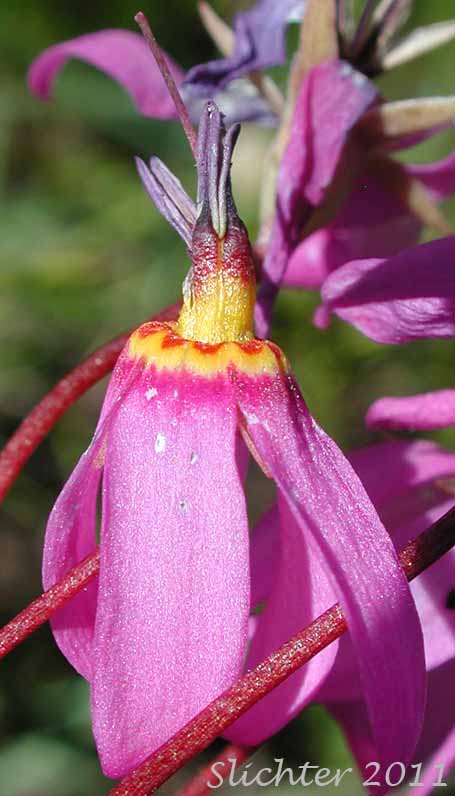
A close-up photo of a flower of few-flowered shooting star as seen at Summit Prairie, Malheur National Forest.........June 26, 2011.
Characteristics:
Few-flowered shooting star is an attractive perennial which
should be fairly easy to grow in the garden meadow or rock garden. The erect
stem rises 5-40 cm from a basal rosette of pale green, oblong to spoon-shaped
leaves from 3-20 cm long. The leaves taper to winged petioles. The herbage of
the leaves and stems is usually smooth-surfaced.
The 3-12 flowers have 5 floral parts. The corolla is 15-25 mm
across with deep magenta to lavender petals 1-2 cm long and reflexed sharply
backwards.. The tube at the base of the petals is white or yellow-ringed with
a thin, wavy reddish-purple ring at the very base. The filaments are united
to form a tube of yellow or purple anthers projecting to 1 cm from the mouth
of the corolla tube. The anther connectives are smooth and and the stigma is
not enlarged at the end of the style.
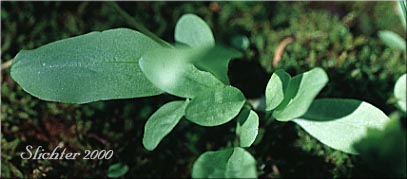
Subspecies:
ssp. macrocarpum: filament tube yellow, anthers
5.5-7 cm long. found in the Columbia Gorge, Willamette Valley and adjacent foothills.
ssp. monanthum: filament
tube reddish purple, anthers 3.5-5.5 mm long. Found at scattered sites east
of the Cascade Mts (to eastern Oregon, northeastern California, and Utah), Willamette
Valley, and Siskiyou Mts..
ssp. pulchellum: filament tube yellow, anthers
3.5-5 mm long, plants usually greater than 6 cm. Widespread east of the Cascade
Mts..
Habitat:
Few-flowered shooting star is found in sagebrush and moist meadows
and streamsides from lower elevations to subalpine habitats.
Range:
Few-flowered shooting star may be found from Alaska to Mexico
and east to Pennsylvania and Utah.
Few-flowered shooting star as seen in moist meadows along the South Loop Road about one mile downhill from the East Rim Viewpoint, Steens Mountain, Harney County, Oregon........August 31, 2011.
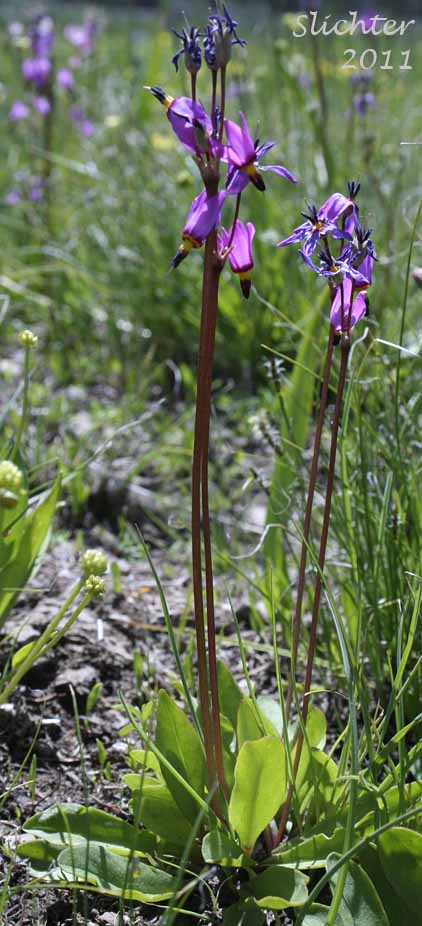 -
- 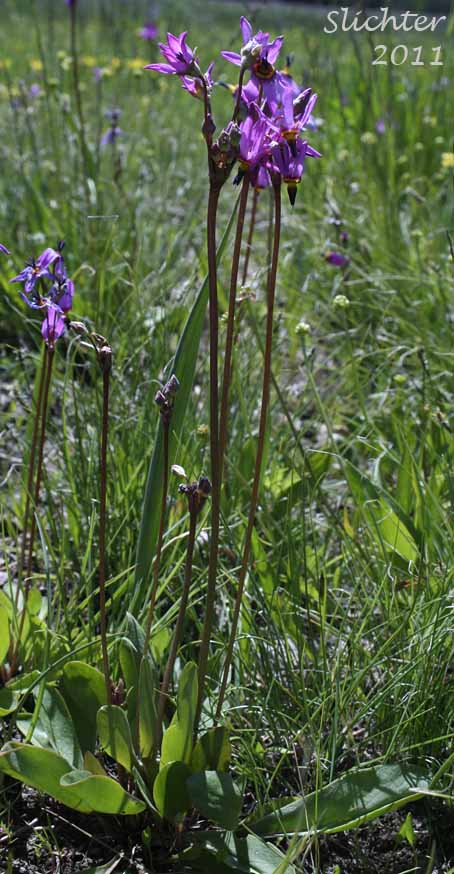 -
- 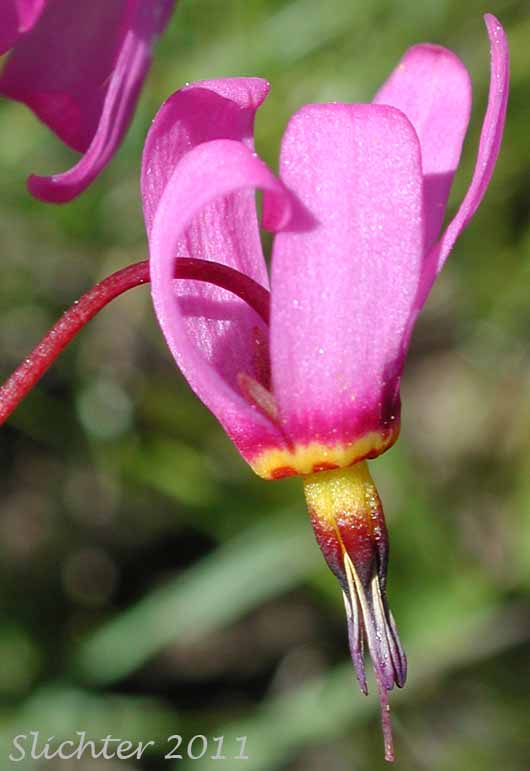 -
- 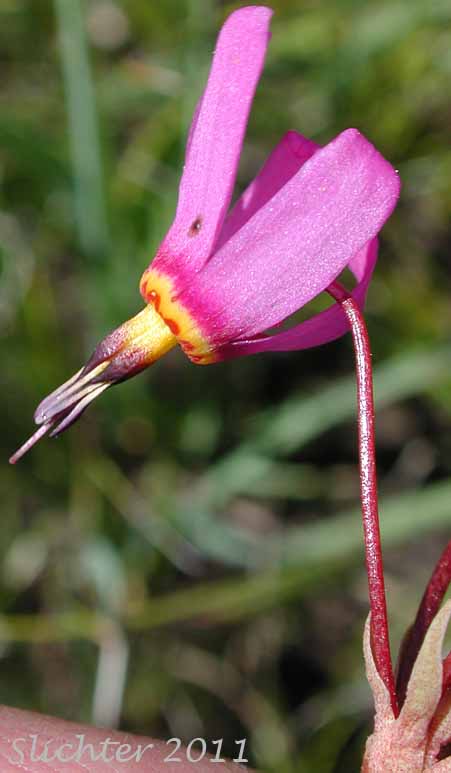
Additional close-up photos of Cusick's shooting star as seen in the transition between wetland prairie and upland sagebrush habitats at Summit Prairie, Malheur National Forest.........June 26, 2011.
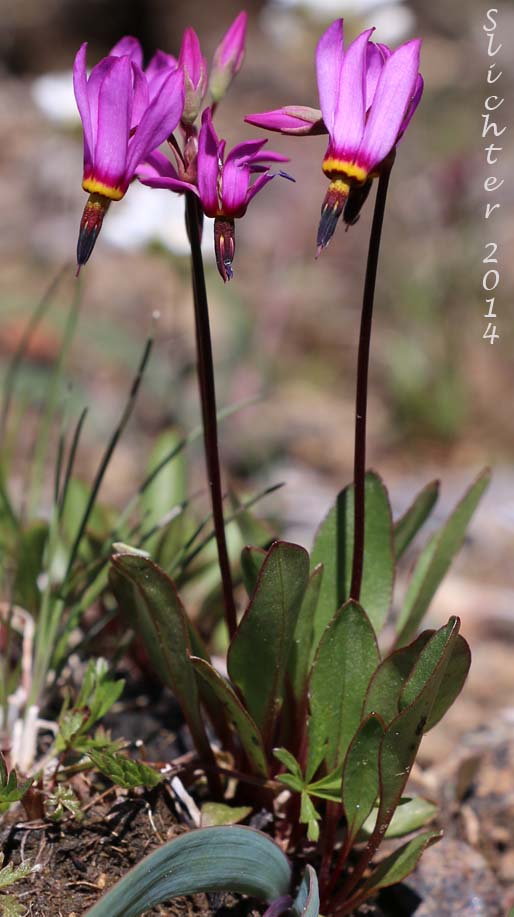 -
- 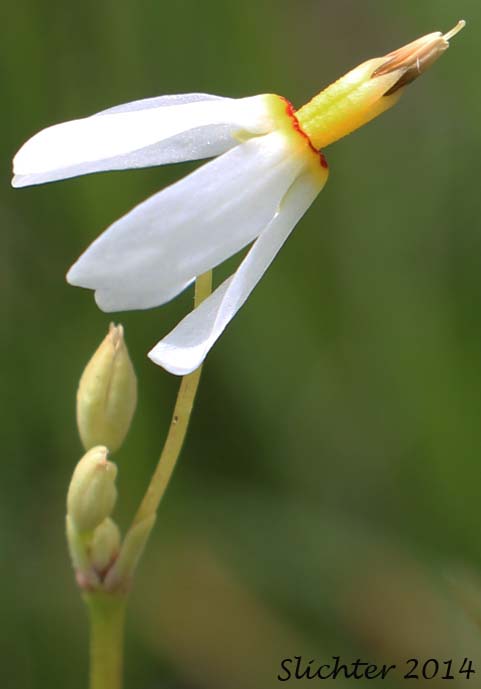 -
- 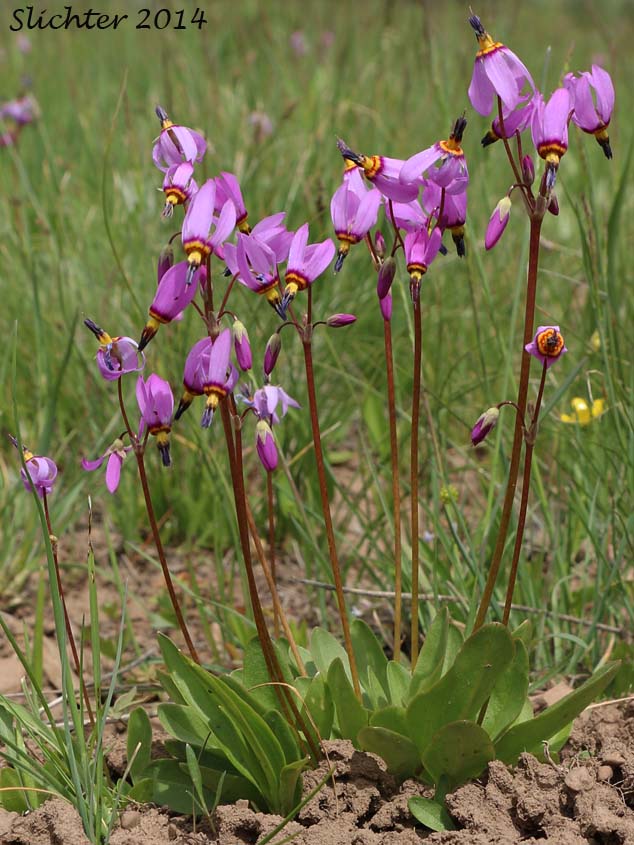
The photo at right shows a few-flowered shooting star as seen on a bald about 2 miles up the Canyon Mountain Trail #218, Strawberry Mt. Wilderness..........May 29, 2014. The photos at center and at right show few-flowered shooting stars as seen in the southeast corner of Summit Prairie, Malheur National Forest..........May 28, 2014.
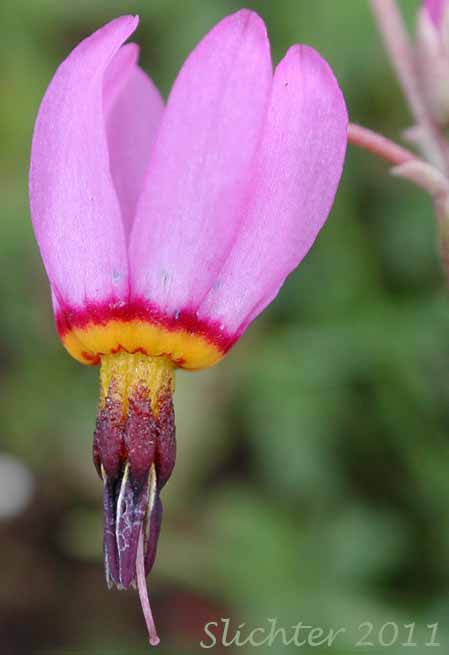 -
- 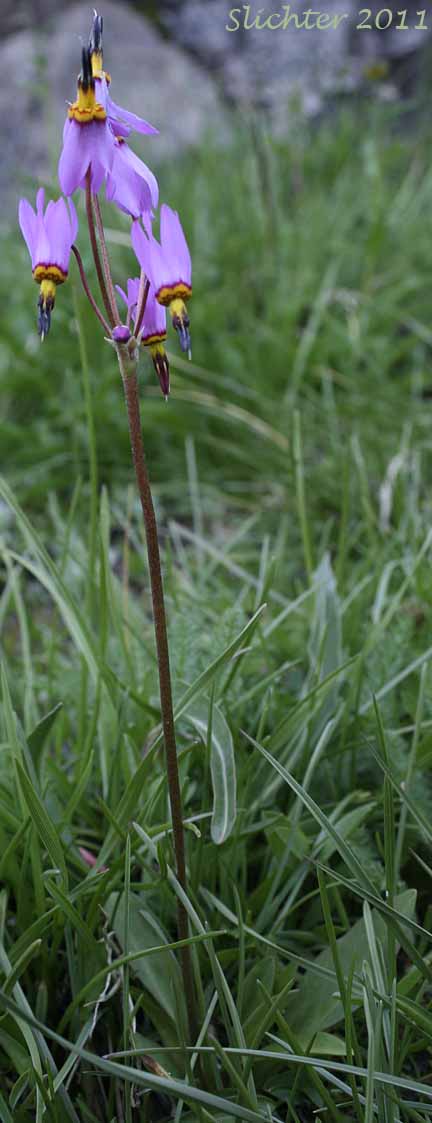 -
- 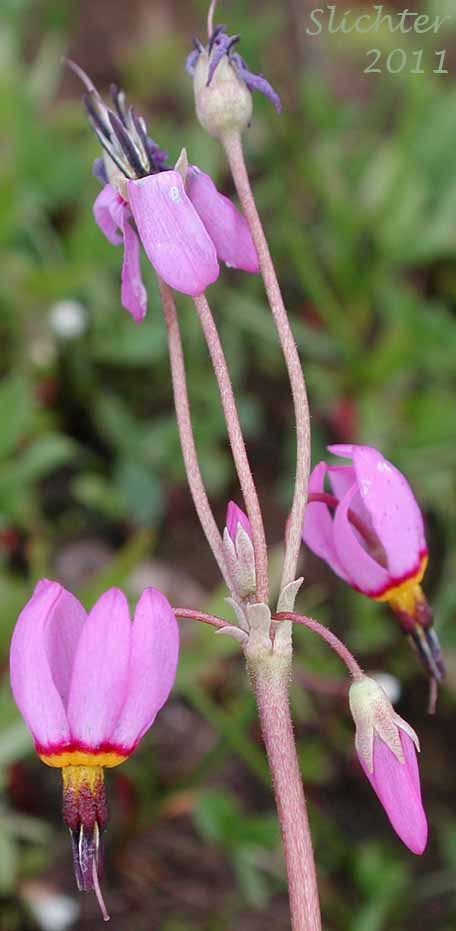
Examples of few-flowered shootingstar as seen in moist meadows along the South Loop Road about one mile downhill from the East Rim Viewpoint, Steens Mountain, Harney County, Oregon.........August 31, 2011.
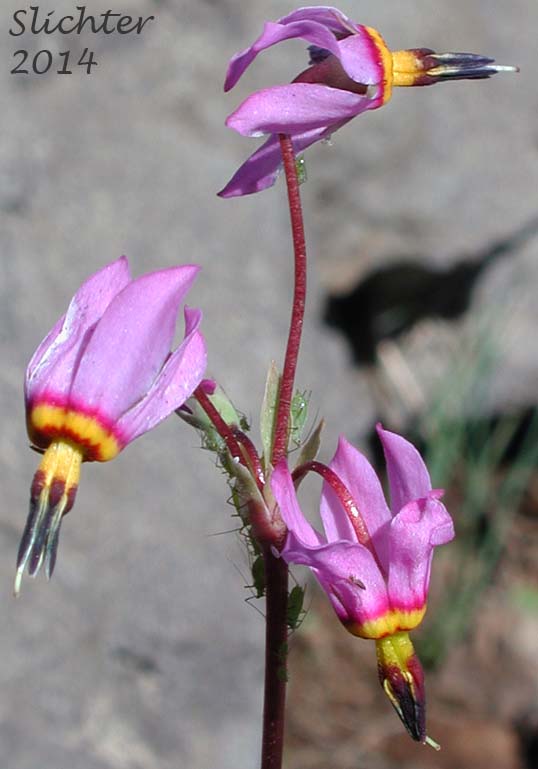 -
-  -
- 
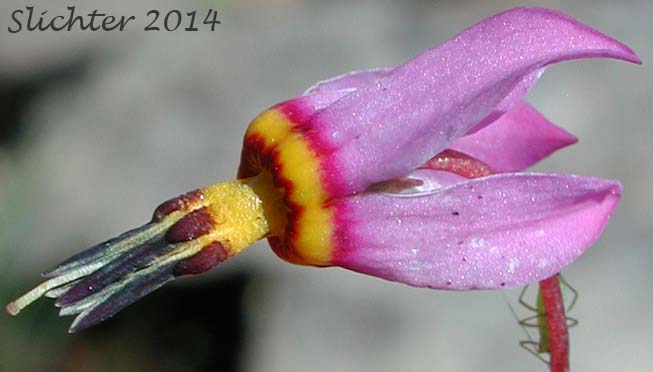
Few-flowered shootingstar as seen in moist meadows along the South Loop Road about one mile downhill to the west from the East Rim Viewpoint, Steens Mountain...........July 9, 2014.
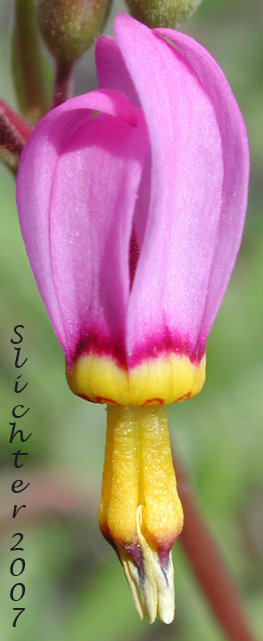
The photo above shows a close-up of the flower of few-flowered
shooting star as seen from grasslands near Hog Lake east of Sprague, WA..........April 29, 2006. Note the yellow filaments
and the lack of gland-tipped hairs on the pedicel.

The photo above shows a close-up of the flower of few-flowered shooting star as seen atop Steptoe Butte in the Palouse country of eastern Washington........April 29, 2006.
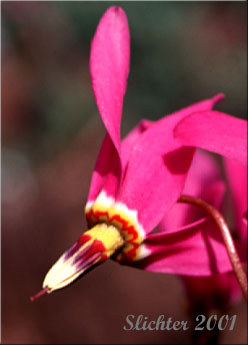
Dodecatheon pulchellum
ssp. macrocarpum
Paul Slichter
